Care tips for the Philodendron Congo:
Light:The Philodendron Congo thrives in bright, indirect light, but it can also tolerate lower light conditions. However, it will grow faster and produce healthier, larger leaves in brighter light. Avoid placing it in direct sunlight, as this can scorch its leaves.
Watering: Water the plant when the top inch of soil is dry. Be sure to water thoroughly, allowing excess water to drain out of the pot. Like many tropical plants, the Congo dislikes sitting in water, so make sure the pot has proper drainage to avoid root rot. In winter, reduce the frequency of watering, as the plants growth slows down.
Humidity:The Philodendron Congo prefers moderate to high humidity but can tolerate normal household humidity levels. To boost humidity, you can mist the leaves regularly, place the plant near a humidifier, or set it on a humidity tray, especially during dry seasons or if you live in a dry climate.
Temperature: This plant enjoys warm temperatures between 18-27°C. Keep it away from cold drafts, air conditioners, or heaters, as it can suffer in temperatures below 13°C.
Soil: Use a well-draining, nutrient-rich potting mix designed for aroids or general indoor plants. A mix of peat, perlite, and orchid bark works well to provide both moisture retention and aeration for the roots.
Fertilizer: Feed your Philodendron Congo with a balanced liquid fertilizer once a month during the summer season. Reduce feeding in the fall and winter when the plants growth slows down. Be sure to dilute the fertilizer to half-strength to avoid over-fertilizing.
Pruning: Trim any yellow or damaged leaves to keep the plant looking neat and healthy. Regular pruning also encourages new growth and helps the plant maintain its bushy, upright shape.
Repotting:Repot the plant every 1-2 years, or when it becomes root-bound. Choose a slightly larger pot with good drainage. Spring is the best time to repot, as the plant is actively growing and can adjust to its new environment more easily.
Propagation: The Philodendron Congo can be propagated through stem cuttings. Cut a healthy stem with at least one node, place it in water or moist soil, and wait for roots to develop. Once the roots are established, you can plant the cutting in a pot.
Toxicity: The Philodendron Congo is toxic to pets if ingested, so its important to keep it out of reach of curious cats, dogs, and small children.


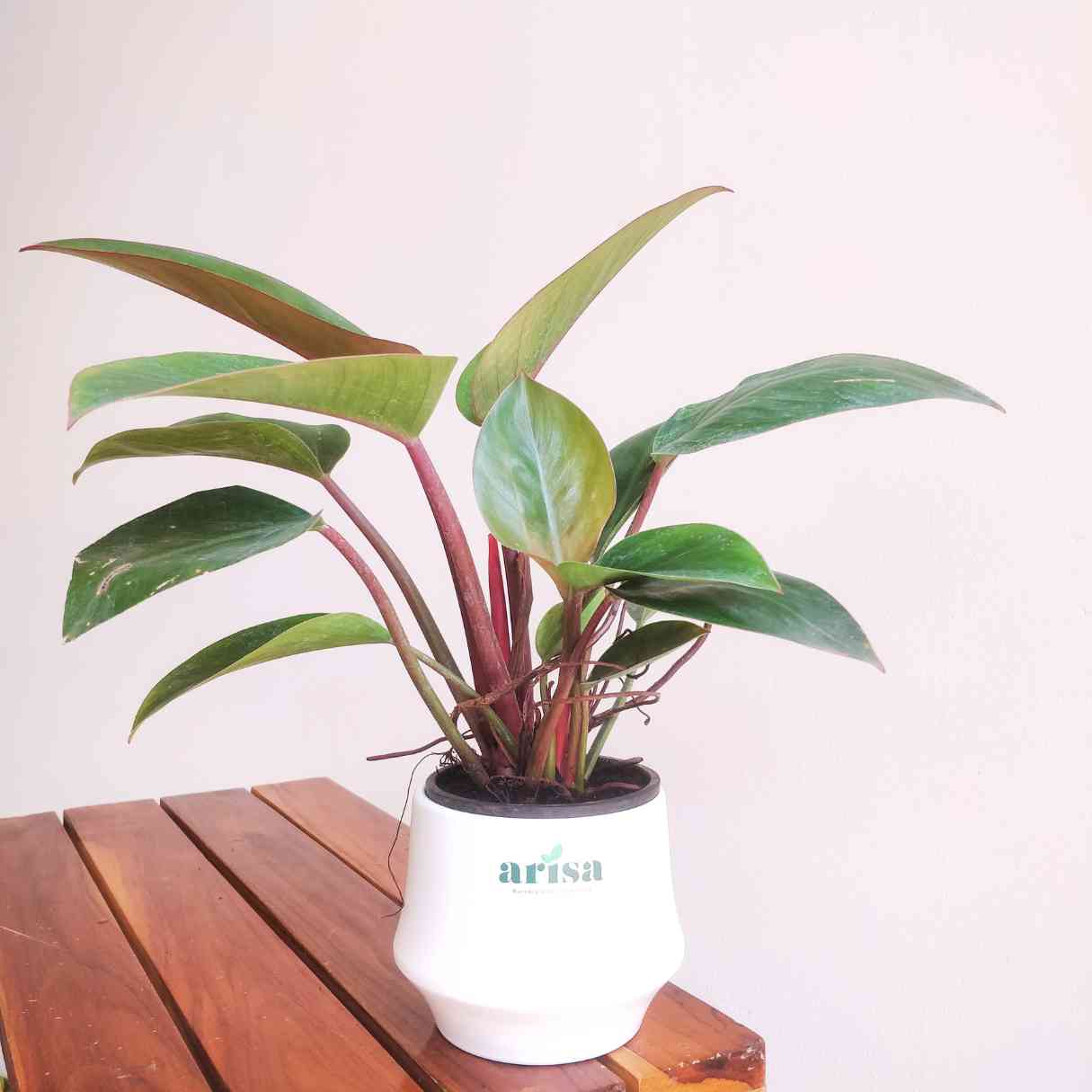
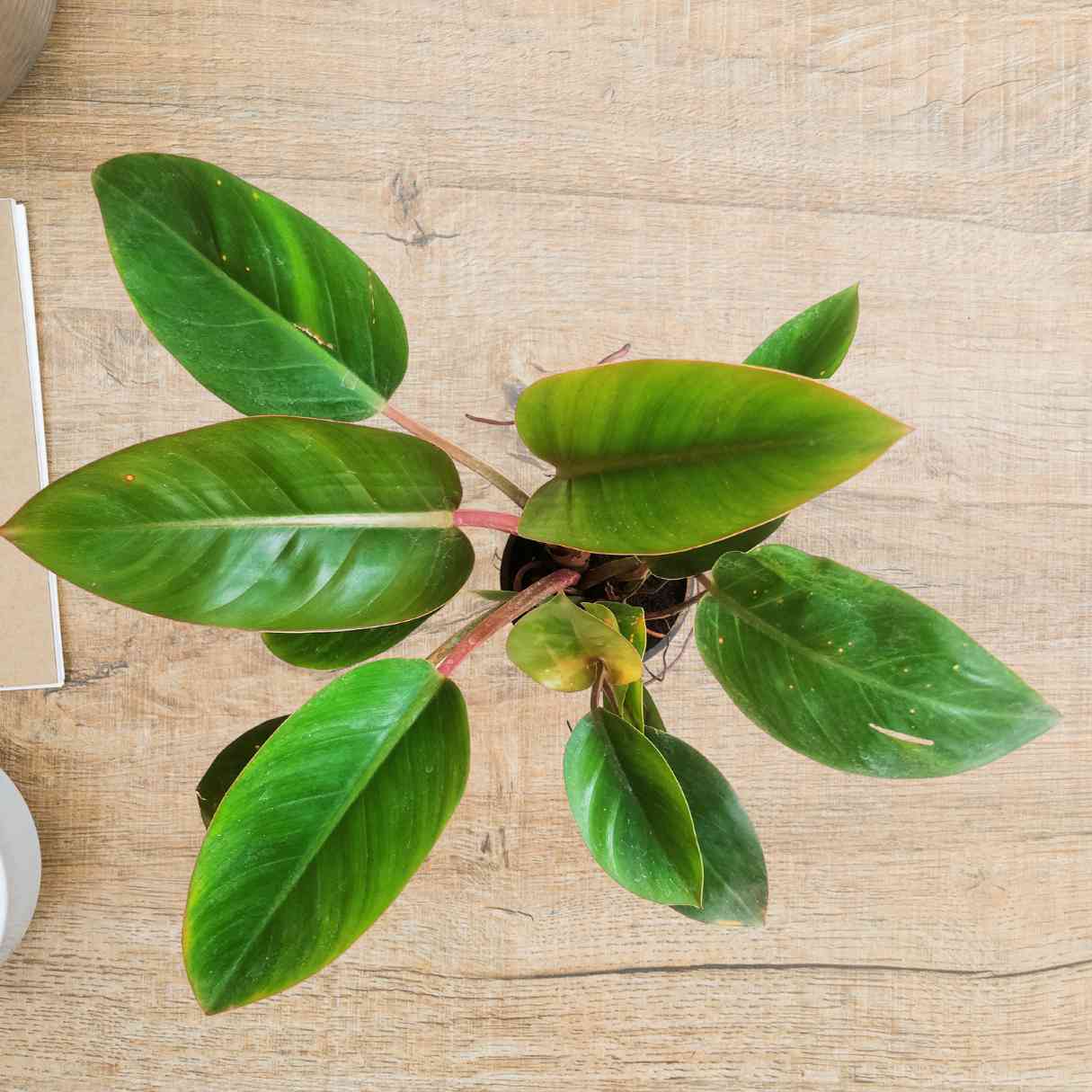
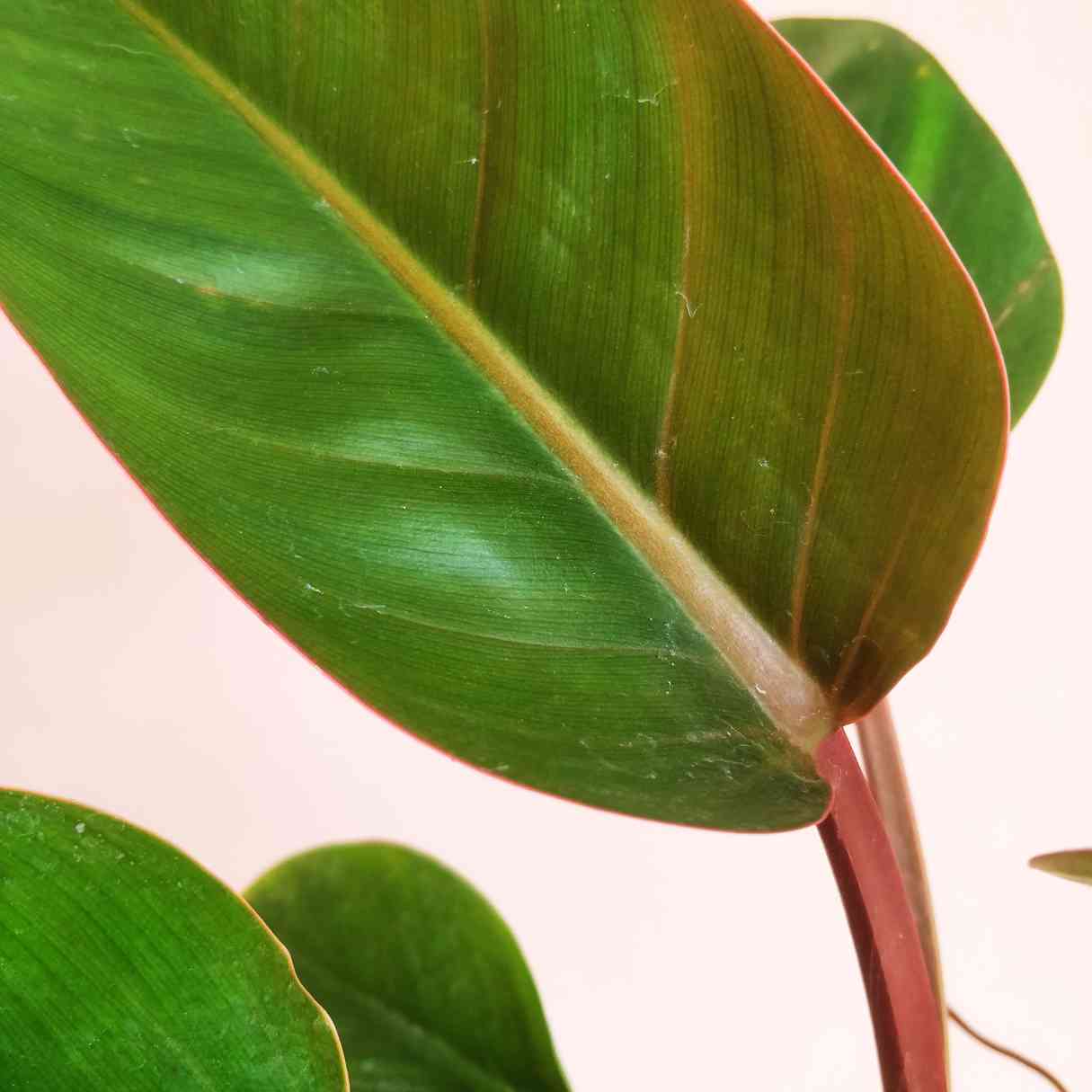
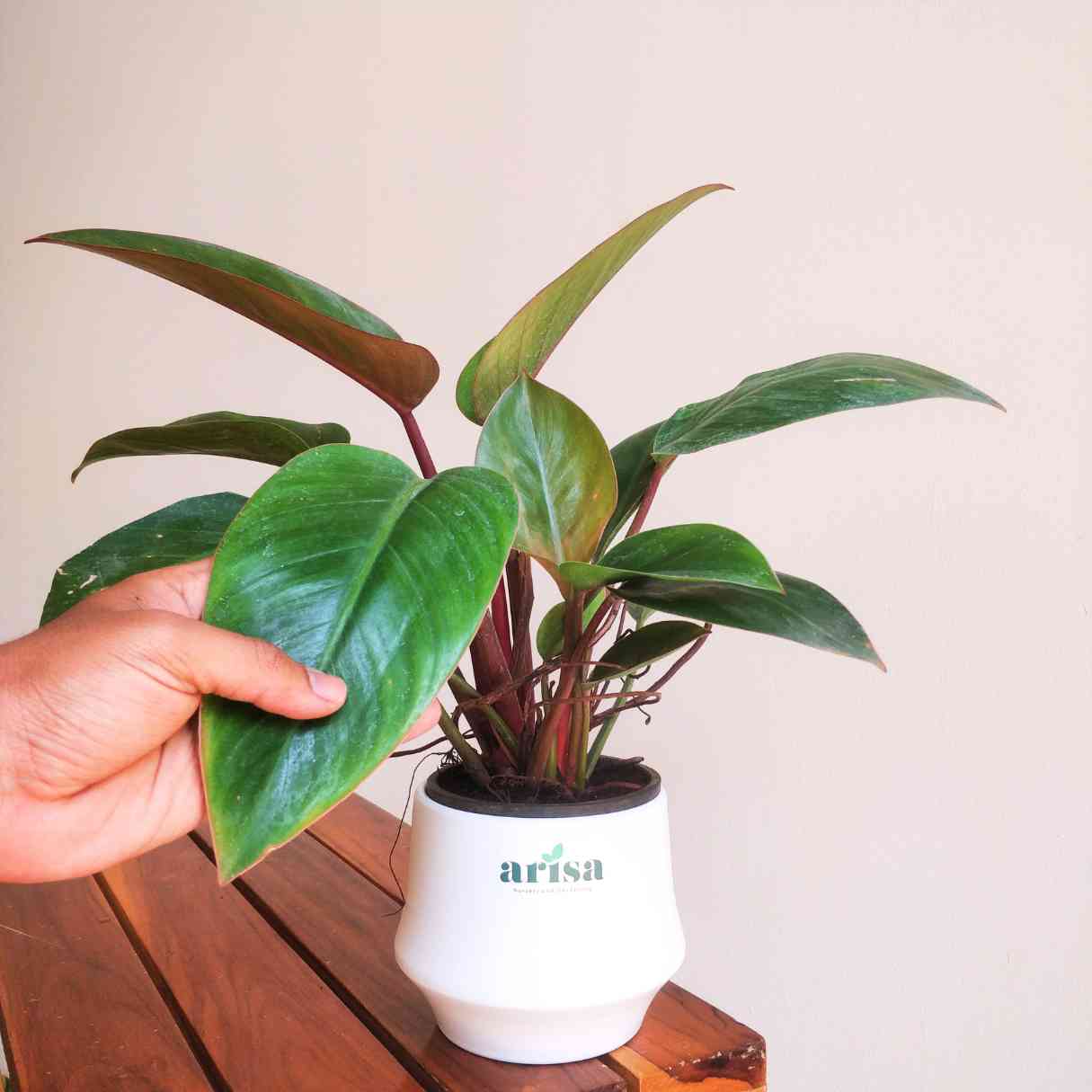




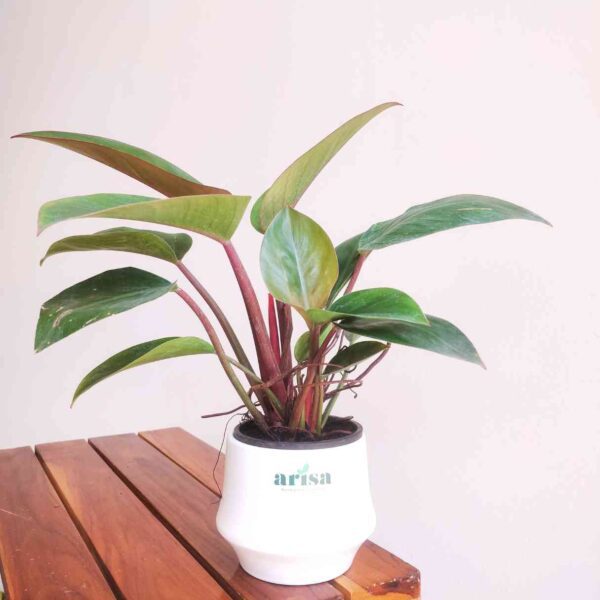
Reviews
Clear filtersThere are no reviews yet.